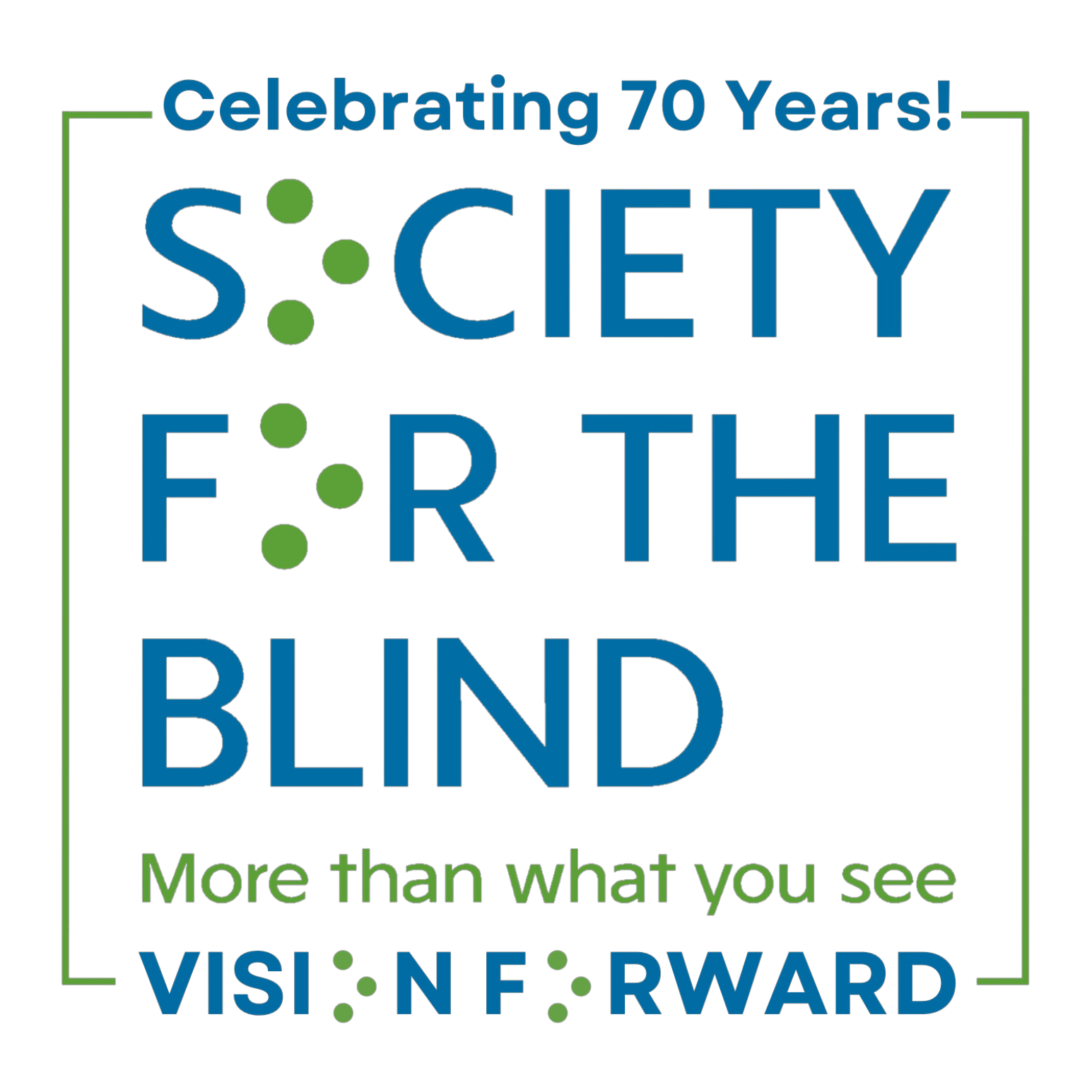Seeing Farther Without Vision
Ed Marin of Fair Oaks was diagnosed with retinitis pigmentosa (RP) 20 years ago – but he didn’t start using a white cane until this year.
“That’s not good,” Ed said. “I should have started using the cane five years ago, but I didn’t know it could help me navigate easier.”
The 63-year-old now considers himself an advocate for the white cane, often explaining to people that the length of the cane helps people see that much farther without vision.
Ed was first diagnosed with RP in his 40s when he realized he could no longer see his hands at night. As his vision slowly declined, he continued his teaching career until retiring a couple years ago due to more substantial vision loss. He then wondered what was next.
“I thought, I’m going to be one of those people who stay home and get forgotten now,” Ed said. “I walked over to Society for the Blind and saw people working with even less vision than me. I realized the world was not ending.”
He decided to begin by volunteering with our Senior IMPACT Project (SIP).
“I thought that since I had more vision than a lot of the folks there, I could be of help,” he said. “I chuckle now because I learned quickly that people with no vision can often do more than people who have partial vision.”
Ed began participating in our SIP Coffee and Connect calls and found them to be a powerful way to meet people with vision loss. He enjoyed SIP events out in the community and classes like woodworking at the training center.
But he still refused to use a white cane.
“I couldn’t see so I was walking slowly down the street like an old guy,” Ed said. “Society was insistent on me learning to use a cane, so a few months later, I started mobility lessons. I really freaked out putting on the learning shades. It was a picture of what my future would be like. But they walked me through it and started the process of teaching.”
As soon as Ed started using a cane, his wife would remind him to bring it everywhere. She pointed out that when he bumped into chairs in restaurants without a cane, no one knew why, but if he had it then people understood.
“The cane is good for telling people that I really can’t see,” he said. “It gives me a little room and a little grace.”
Ed now has taken a variety of classes at Society for the Blind, including orientation and mobility, introduction to braille, daily living skills and assistive technology. He says he plans to stay with the Senior IMPACT Project “as long as they will allow me to hang around,” and he wants to learn braille. He also says getting to know the instructors has been lifechanging.
“They’ve taught me that the only thing I can’t do now is drive,” Ed said. “They’ve all had a big impact on me with how much they’ve accomplished, and continue to accomplish, on a daily basis. They give you a view into what you can do, not what you can’t do. I can just continue life as normal. Everything’s maybe done a little slower, but I can still do it.”
This summer, Ed and his wife will travel to France and Italy with one of his sons. He credits the staff and students at Society for the Blind for showing him that he can still travel with vision loss.
“It’s fascinating how many people at Society have gone to Hong Kong, Ireland and other places in Europe,” he said. “They don’t have to limit their mobility in traveling. Now hanging out with them, I realize nothing is off the table, whether you’re going outside the country or traveling to Tahoe, Monterey, San Francisco or wherever.”
Ed also credits his wife for helping him to stay active. Just the other day, the couple went on a 6-mile hike around Lake Tahoe. Together they used tools he learned at Society for the Blind, such as holding onto a cane together through rocky areas so he would not stumble.
Ed also has learned to use public transportation around Sacramento, including Light Rail and RT, as well as Uber and Lyft, and he takes Amtrak to visit his dad in Fairfield. He looks back on when he stopped driving and wishes he had started at Society for the Blind sooner.
“I thought I had to rely on my wife to drive me around, so I even changed teaching jobs to accommodate that,” he said. “I didn’t know all the options available. I now have no issue getting around. It’s just a matter of what you’re exposed to.”
When they aren’t traveling, Ed and his wife volunteer with Society for the Blind’s Access News program that records people reading aloud a wide variety of publications for people without vision. He makes the introduction and then his wife reads the publication.
Ed says Access News is just one of the ways he is impressed with Society for reaching out to people with vision loss, also noting that Society makes home visits and presents at small groups in suburbs and rural areas to ensure everyone has access to the latest tools and information.
“You think that losing your vision could make you dependent and isolated,” Ed said. “It’s refreshing to be part of Society for the Blind, where people are living their lives, having families and traveling, never having had vision during their entire existence. To me, it’s like, what did people do 70 years ago before Society for the Blind?”
